Chiapas is the most southerly of the Mexican states and is full of mystic beauty. For a long time it was a state that tourists approached with care, it was the locale of the indigenous peoples revolt (by the Zapatista Army of National Liberation) and its fabled spokesman - Subcomandante Marcos. The turmoil, has for the most part, died down now and beauty awaits the intrepid traveler. Earthquakes? Earthquakes are a story for another time.
In late 2015 we added eastern Chiapas to our grand tour of the Yucatán Peninsula. On the last day of the year we were at Cascadas de Aqua Azul. My photos from Chiapas are posted in the Chiapas Photo Gallery.
AGUA AZUL
If you have ever visited a website about tourism in Chiapas, Mexico, or read a book or magazine about that state, you will have seen photos of Agua Azul. When I first saw photos of the place decades ago I had two reactions. Firstly, I was overwhelmed by the apparent beauty of the water; secondly, I had a visceral reaction about the number of humans who must be swarming all over the place. Both of those initial reactions have been reinforced over the years. On this trip I decided to bite the bullet and mark Agua Azul as one of the two places I wanted to visit (along with Celestún in the state of Yucatán).
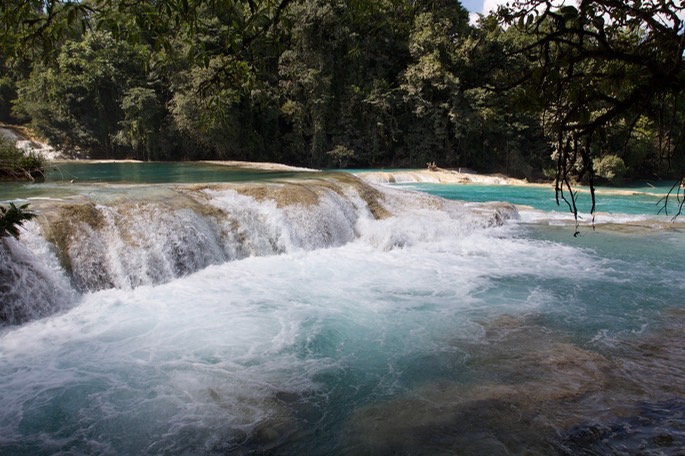
Parque Nacional Agua Azul, Chiapas, Mexico
We had a late start on the planned day of our visit but were on the road by mid-morning. Roads in Mexico come with topes (speed bumps - some are rather "significant") at every point that you should slow down (villages and some crossings for instance). Along the road from the city of Palenque to Aqua Azul, the locals had staked out their particular tope to sell various food items. It is very wise to slow down when approaching a tope, and crossing one often requires that you slow to 5 mph or so. Given the fact that cars have to slow down significantly for a tope, vendors are able to stand beside the road and hawk their goods. Along this road we encountered a new trick: kids would hold a string across the road - causing the uninitiated to stop out of fear of dragging kids down the street. The kids then beg or hawk their wares. If you slow to a moderate speed they will drop the string and you can pass through unmolested. Some of the kids were even more aggressive, literally standing in the middle of the road and forcing you to stop. All of this was not enjoyable.
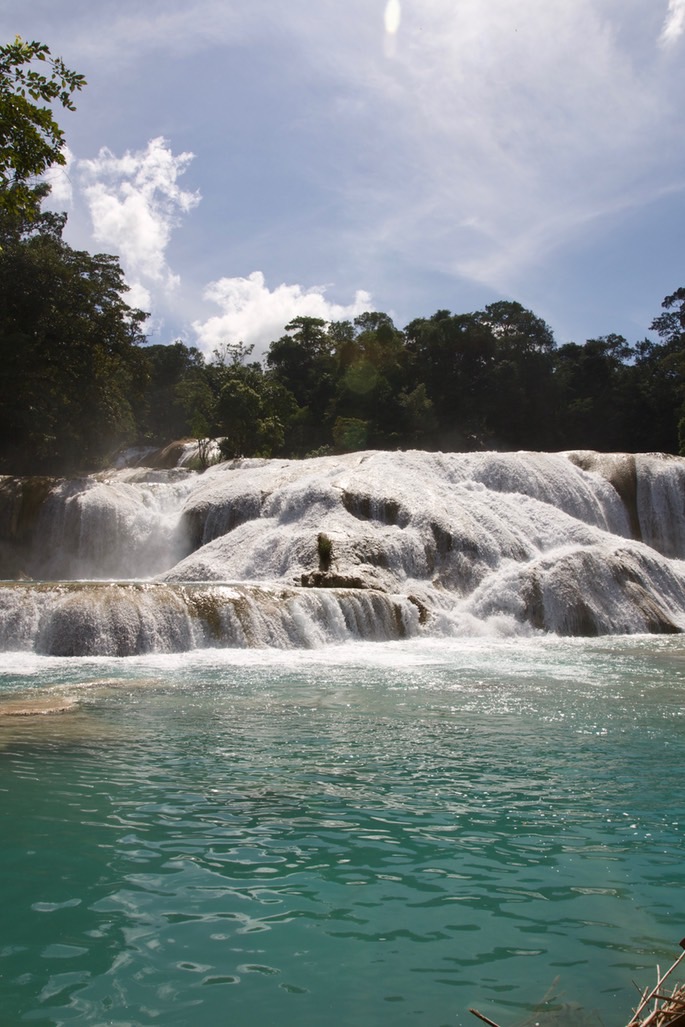
On this day, however, we were in for a particular treat. A few kilometers from the Agua Azul turnoff the traffic came to stop. Some kind of blockage on the road. We thought that it was construction or a landslide and returned to our hotel after stopping at the Cascada de Misol-Há. Having lived for years in the Pacific Northwest of the United States, I was not overly impressed with the waterfall but I did manage (I hope) to get some good video of Mantled (Mexican) Howler, Alouatta palliata mexicana.
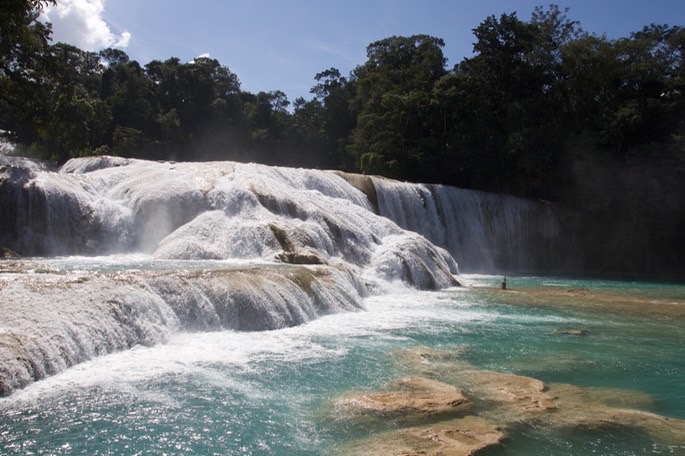
The following day was set to be another ruins day but Rebecca and I decided that we would try to see Agua Azul again, yea Rebecca. Our plan was that with two cars for six people the other four could do the ruins thing if they wished and we would do Agua Azul. In the end, the rest of the group decided to join us for another Agua Azul run. After winding through the topes and kids we reached the traffic backup and learned that the road was being blocked by a village which was upset about how road fees (when entering various tourist sites you often have to pay a road fee to the locals) were being divided up. After a wait of three+ hours and a fee of 100 pesos (about $7 USD) we were allowed through. When we got to the Agua Azul road, we were stopped by pretend Zapatistas (complete with black ski masks and weapons) and required to pay 30 pesos a person for a road fee. We then had to pay an entrance fee to get into the park.
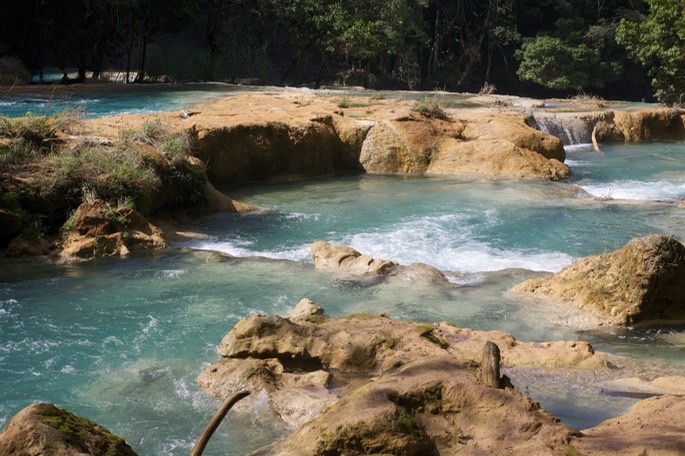
Various book guides remark that Agua Azul is overrun with tourists and vendors - but not when a revolution is going on along the access road. There were crowds of people at the site, but not swarms, and the vendor shops, which were located along the walk along the river (on the side away from the river) provided an additional ribbon of color to the walk. The tourist area at Aqua Azul is not a natural place, it is a human amusement park, but the river - the river is absolutely beautiful. Seeing it is worth whatever hassle you have to put up with. Apparently the water is clear (with dissolved calcium and magnesium compounds) and it is light refraction which creates the stunning shades of blue of the river. This is a place I would return to; it begs for more exploring. Down river is very good I hear.
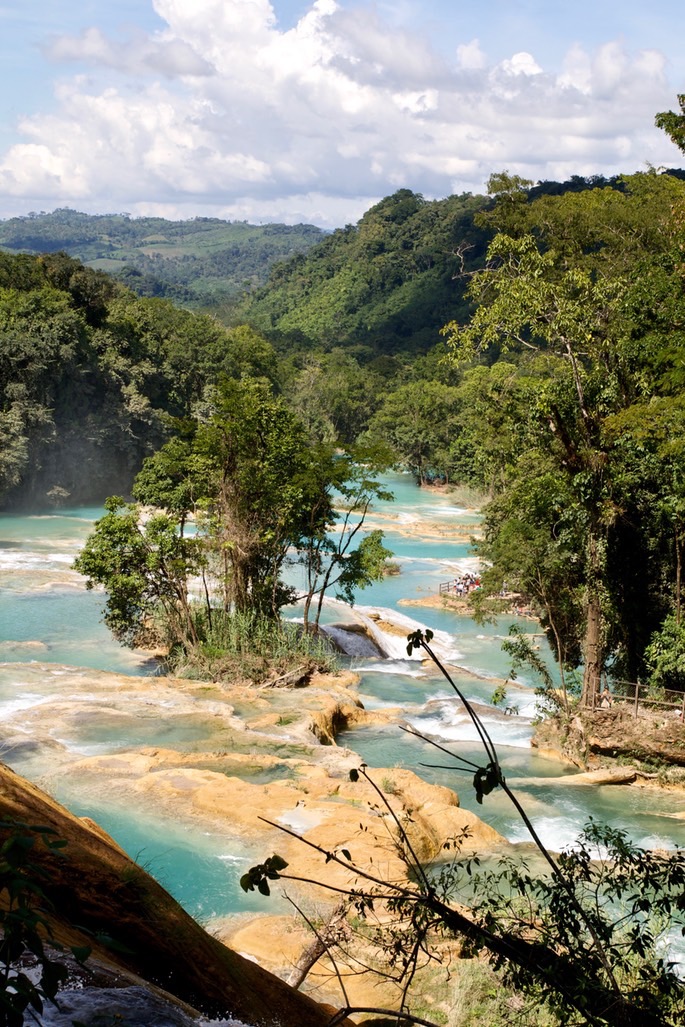
Our friend, Matilde Holzwarth, was on this trip with us. She has since died. Her death hurt all of us very deeply and in posting this material her memory came roaring back with a vengeance.
PALENQUE
Decades ago John Schaumburg, a fellow birder, a thoughtful intellect, and at the time, my boss, filled me in on a recent trip that he and his wife, Iris, had made to Palenque, Chiapas, Mexico. It sounded magical, wonderful, mystical, a place to sit on the pyramids and watch Toucans.
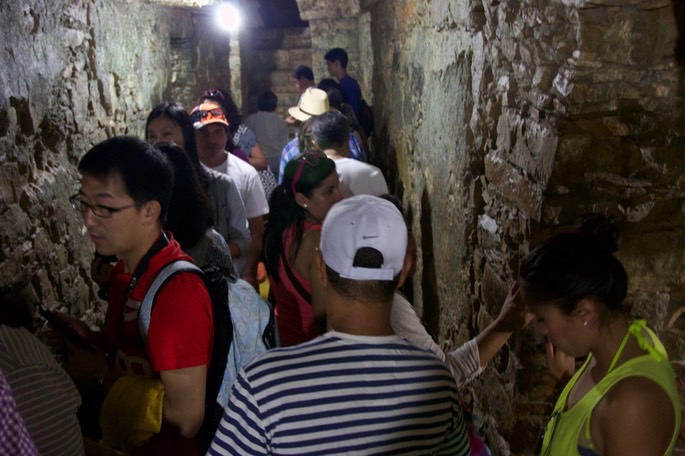
Palenque Ruins, Chiapas, Mexico
Palenque is a large site in a beautiful setting. My memory of it is captured in the photos above and below. Queues, people shuffling along to see the next doorway, etc. Officially it is known as the Pre-Hispanic City and National Park of Palenque.
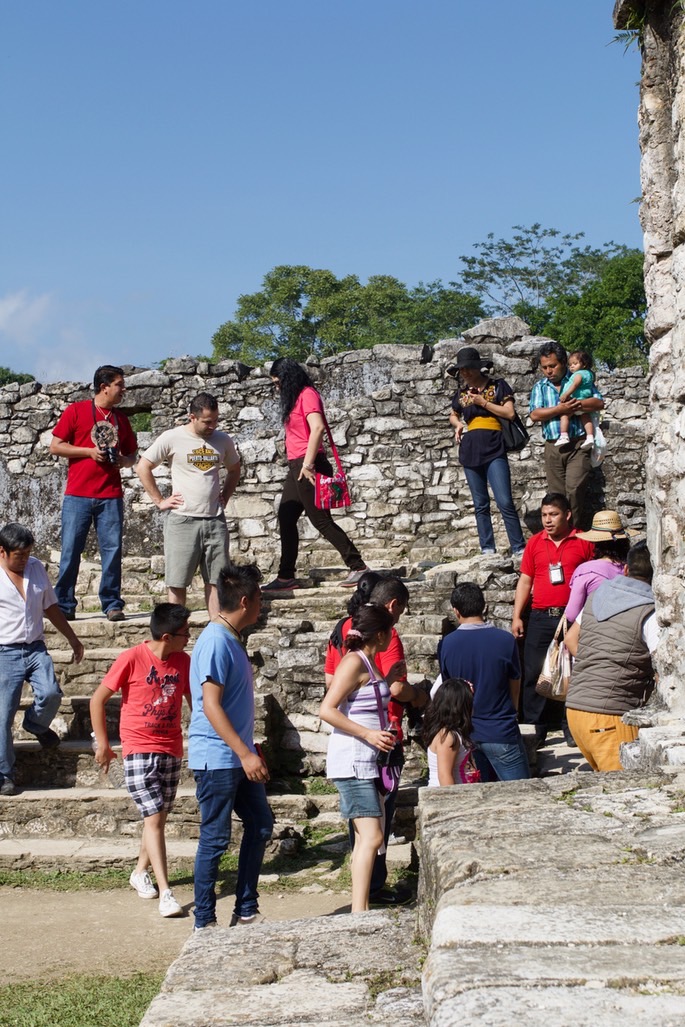
Profoundly disappointing as only an unfilled dream can be, that is how I would sum up Palenque. I suppose that I was hoping to replicate my experiences at Tikal several decades ago. That, of course, was in a different format - I spent four days wandering the ruins. When the crowds were there I was in the jungle and when they were not I could sit on a pyramid and watch a toucan - all by myself. If I were ever to visit Palenque again it would be to wander the trails, in a vain effort to get away from the mass of people, but a return visit to Palenque is very far down on my list.
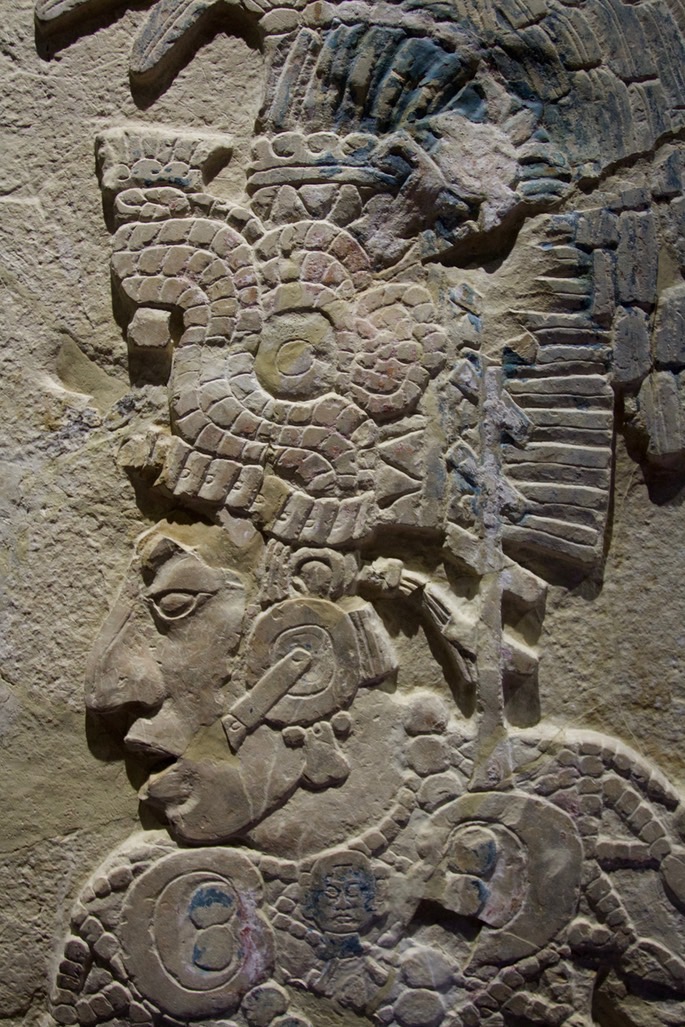
K'inich Kan B'alam II - a portion of the Temple XVII Tablet, Museum at the Palenque Ruins, Chiapas, Mexico
All of that said, the site is magnificent and the courtyards and observation tower at the top of the Palace are something to see. AND, visit the museum. Rebecca convinced me that I should see the museum and the two of us spent late afternoon there. It is a relatively small museum with excellent displays and works of art, well worth the time. For example, the photograph above is a detail of the Temple XVII Tablet on display in the museum. It depicts one of the rulers of Palenque, K'inich Kan B'alam II. There are many works of this quality on display at the museum. When we were there we often had a room to ourselves, that is, of course, not always the case.
BONAMPAK, CHIAPAS
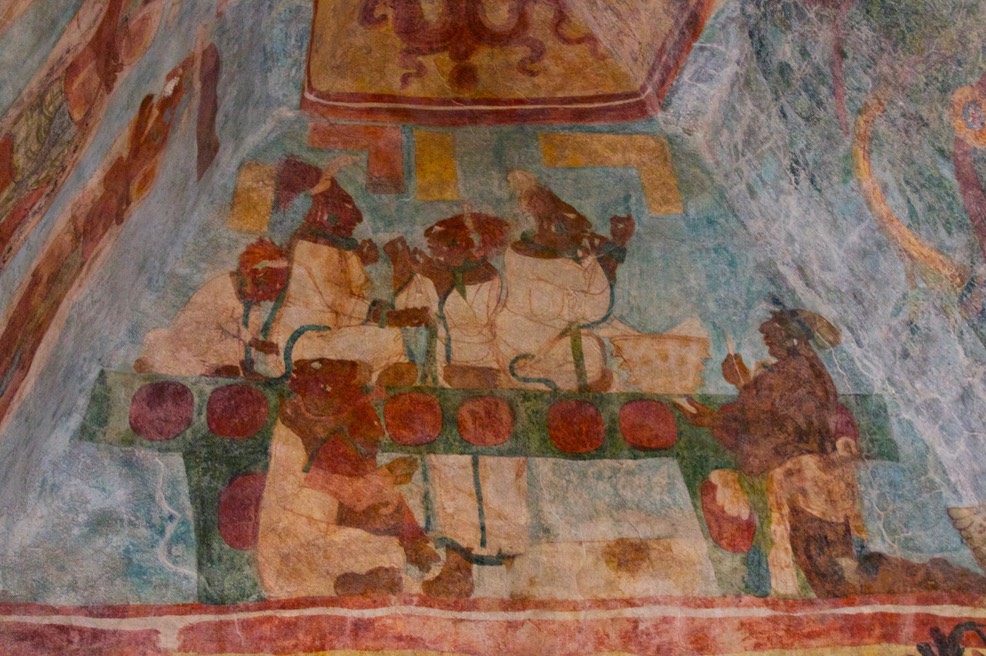
In my notes about the ruins in the state of Campeche, I noted that the frieze at Balamku was one of the two most significant works of art that I saw on the trip to Yucatán - the murals at Bonampak is the other. These murals are vibrant, often detailed, and in reasonable condition. It is worth the hassle to see them.
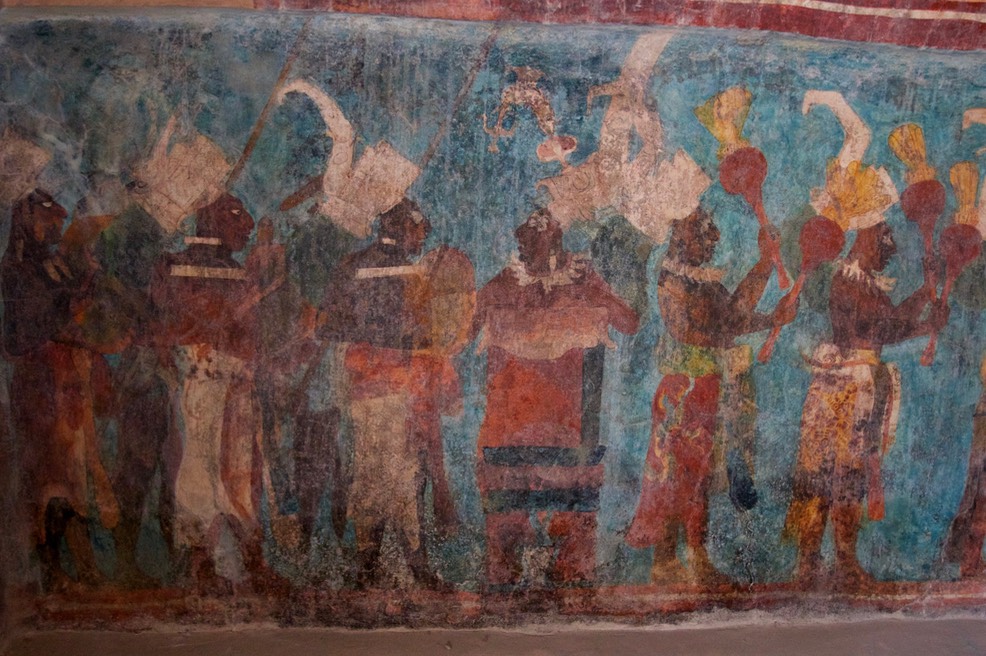
And hassle it is. Not from the logistics stand point but from the experience stand point. At Bonampak, the locals have carried the “we want a part of the pie” mentality to the point that you must hire their transportation to take you to the site, this after paying your road fee to them to drive part way in - to be followed by the entrance fee and maze of vendors before you actually get to the site. All of that is okay with me -- it’s the hour and a half the taxi/van drivers give you to see the site. They define the experience. Once you walk up the steps to the rooms with murals, stand in the queue to see each of the three rooms, and look around for a short bit, your time is up. The taxi/van drivers are all about moving product, they don’t figure you will ever be back, and because of them, they are correct - so they want you in and out. It is another negative mark for the locals. They are really missing the mark and could make a better experience for the tourists and more long-term benefit for themselves if they modified their short-term focus of greed.
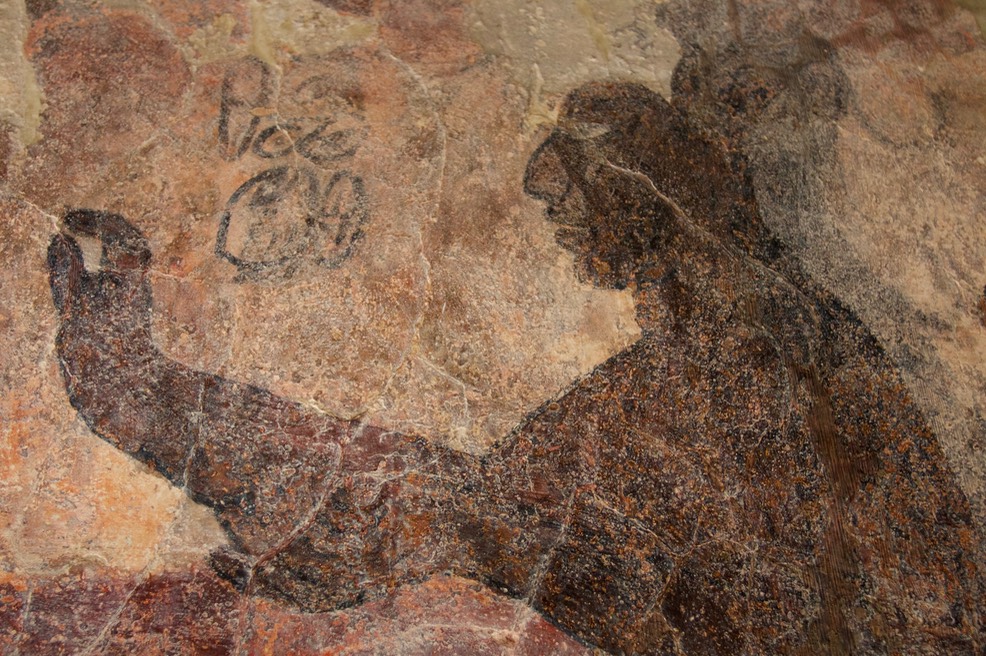
The Mexican government has done an excellent job of monetizing the ruins found in their nation. But the manner in which they have done it is distasteful. At all of the more popular sites the atmosphere is more like Disneyland than it is a cultural experience. Turnstiles, vendors selling trinkets under foot, pseudo-officials saying anything to get you to fork over some pesos, and neat canned stories from the guides are reasons to never return. On the positive side, multi-lingual guides (in many languages), wonderful sites (here is hoping that all that reconstruction is halfway accurate), and a reasonable method of crowd control help make the experience bearable.